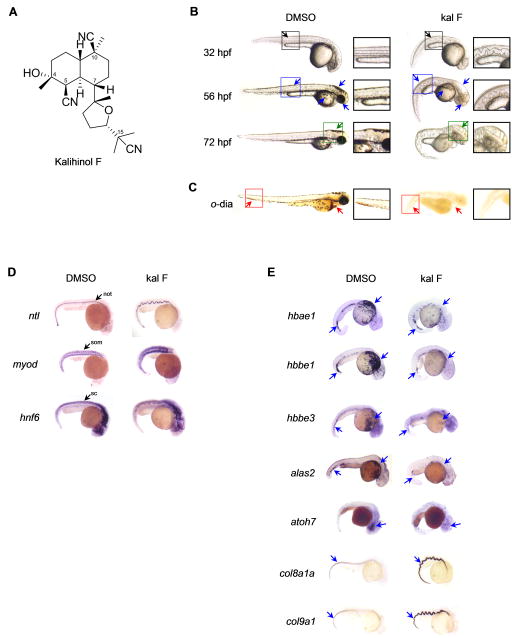Figure 2.
Embryos treated with kalihinol F show a phenotype consistent with copper deficiency. a. Chemical structure of kalihinol F. b. Exposure of zebrafish embryos to 2.5 μg/ml of kalihinol F (kal F) resulted in a wavy notochord (black arrow, D, ntl), loss of pigmentation (blue arrow) and enlarged hindbrain vesicle (green arrow) as compared to DMSO-treated control embryos. Boxed figures are enlargements of highlighted portions on whole embryos. c. o-dianisidine staining at 72 hpf revealed loss of hematopoiesis (red arrows) in treated embryos versus control. d. In situ hybridization on 32 hpf embryos for ntl, myod and hnf6. not, notochord; som, somites; sc, spinal cord. e. In situ hybridization for hbae1, hbbe1, hbbe3, alas2, atoh7, col8a1a, col9a1 confirms gene expression analysis by RNA sequencing that is consistent with copper-deficient phenotype of kalihinol F. See also Tables S1, S2.

